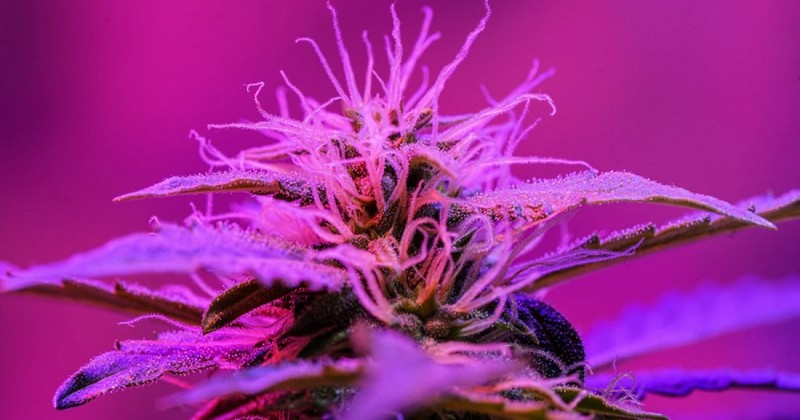5 steps to getting hooked on cannabis

These are the stages that cannabis users go through as they develop addiction.
Cannabis is the most widely consumed illegal drug in the world. And due in part to the results of much research, which attribute beneficial effects to some of its active ingredients.
Also partly because of this, there are more and more people Smoking cannabis who are not aware of the risks of abusive consumption. We would say that these people have little or no risk awareness of the substance.
In this article you will discover the stages that many people go through, from low-risk recreational use to addictive behavior with serious consequences for the person's life.
The 5 phases of developing a marijuana addiction problem.
Using life as a couple as a metaphor, one can explain the process of developing an addictive behavior problem with marijuana (and with any other drug). (and with any other drug).
1. Infatuation
In this first phase, the person comes into contact with joints for the first time. He/she probably starts with small consumptions, mostly motivated by curiosity, or perhaps by social pressure from the group of friends.
In any case, the person experiments with cannabis use. In this phase, with very small doses, the most intense effects of marijuana and its active ingredients are usually experienced.. So users who enjoy it in the first few doses are more likely to continue consuming it.
Most people who have problems or unpleasant episodes during their first use (e.g., an episode of paranoia and anxiety) stop using at that time, and are much less likely to return to it in the future, at least on a regular basis.
The person will begin to associate marijuana use with positive experiences, such as the company of friends, laughter, or escaping from daily worries for a while. This detail is key, as it explains why many people develop a strong psychological dependence on cannabis.
In the falling in love phase the foundations of the person's future "relationship" with cannabis will be forged.The expectations and desire to use again more and more frequently will be generated.
2. Honeymoon
In this phase, the person enjoys marijuana consumption very much, and in some way has "committed", as if it were a couple.
The most characteristic of this phase is that the person only perceives the positive effects of the consumption, the fun, the relaxation... But he does not see the rest of the problems that can derive from the excess.
In this phase the person has started to consume much more habitually, even increasing the quantities. In his mind, everything about marijuana is good, and he does not imagine that he will have problems in the future.
3. First problems (denial and self-deception)
After a while of using, the person begins to develop tolerance to THC and the other active ingredients of cannabis.. This means that, due to high and frequent consumption, the body has adapted, and higher and higher doses are needed to feel the same effects as before.
As consumption increases, so does the likelihood of suffering the less desirable negative effects of cannabis:
- Memory loss
- Difficulty concentrating
- Psychotic symptomatology
- Anxiety and irritability
- Insomnia
- Etc
In this phase, the person will also will also begin to experience withdrawal symptoms and psychological dependence on marijuana.. The mere thought of going several hours or days without smoking joints causes discomfort or even terror.
Here, marijuana is not only smoked as an escape from everyday problems, but to try to avoid the unpleasant effects of too much marijuana or withdrawal symptoms.
It's a downhill spiral. And denial of the problem will only make things worse in the long run.
4. Escalating use and attempts to compensate
The user remembers the good times of the honeymoon phase, and fantasizes about fantasizes about enjoying all the benefits of marijuana use again..
In this phase, many people fall into self-deception. They try to resolve the cognitive dissonance by convincing themselves that the problems derived from consumption are simply bad luck, and that they are not the result of uncontrolled joint smoking.
In addition, they will start to intensify their consumption. A dangerous phenomenon occurs here: over-compensation.
In their attempts to try to "compensate" for the negative effects of abusive consumption, the person smokes more and more.. The escalation of consumption attempts to compensate for the tolerance developed, and far from solving the problem, it aggravates it.
5. Crisis and divorce
This is the phase in which, often with external help, the person will realize how toxic his marijuana consumption is, and will begin to consider alternatives to quit, or at least limit consumption.or at least limit consumption.
The person has become aware that he or she has been smoking too much, and that if he or she wants to get back to enjoying life in a normal way, he or she will have to struggle to overcome the addiction and rebuild his or her life.
At that point, the person may try to quit on their own. Some people will succeed, others will relapse and suffer frustration and a sense of failure, as well as the false belief that they "can't live without marijuana".
It's time to ask for help.
Do you need help to quit marijuana?
I am Luis Miguel Real, I am a psychologist and I am specialized in the treatment of addictive behavioral problems.Do you want to quit joints and don't know how to start? Contact me, and we will get to work immediately through online therapy.
(Updated at Apr 12 / 2024)